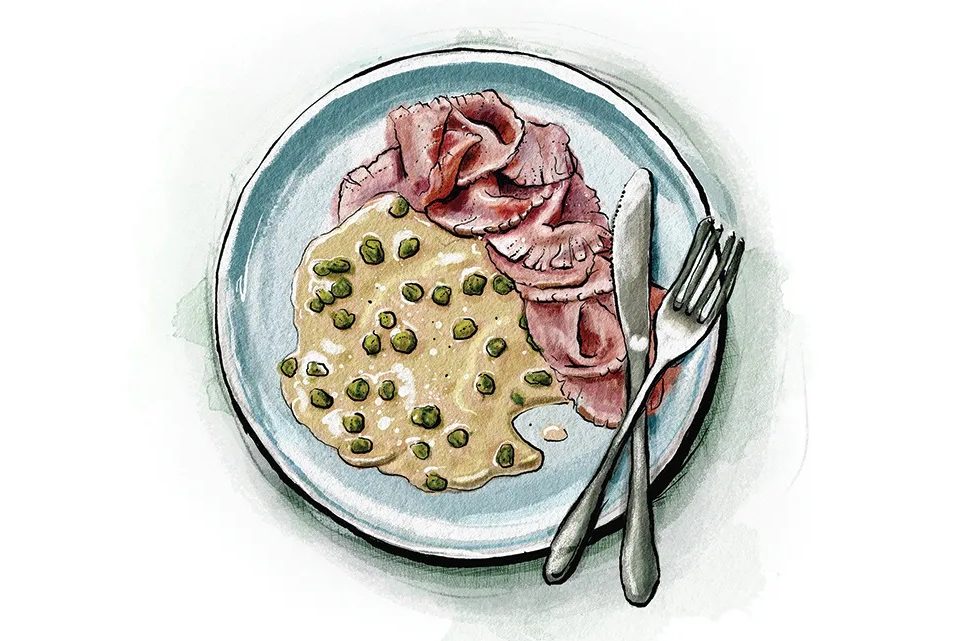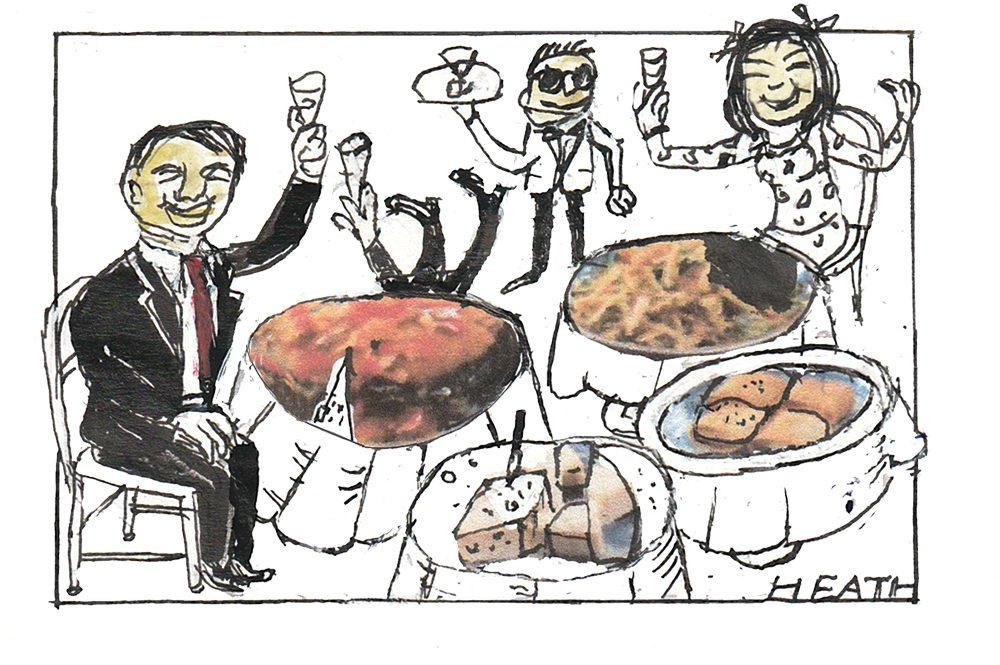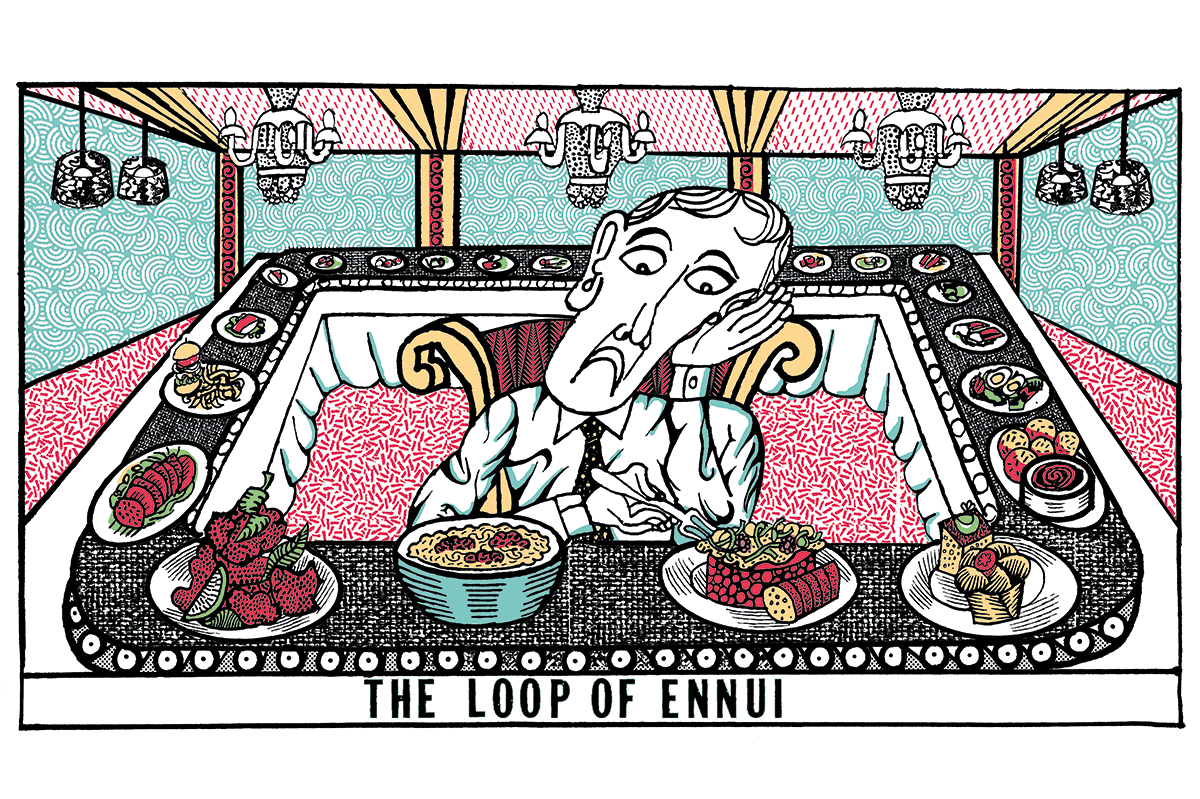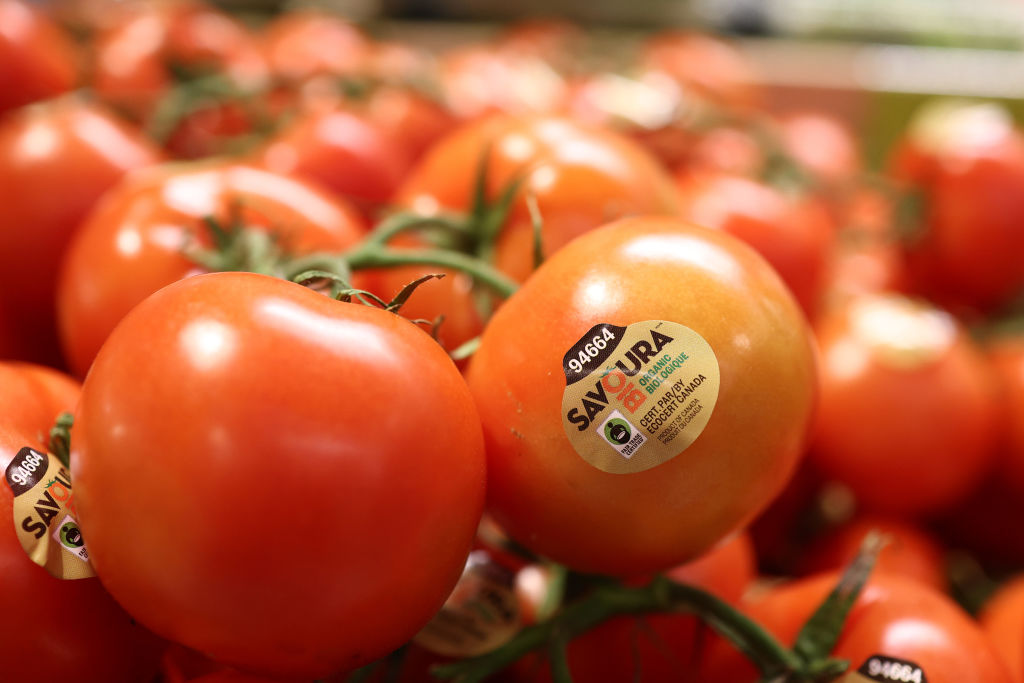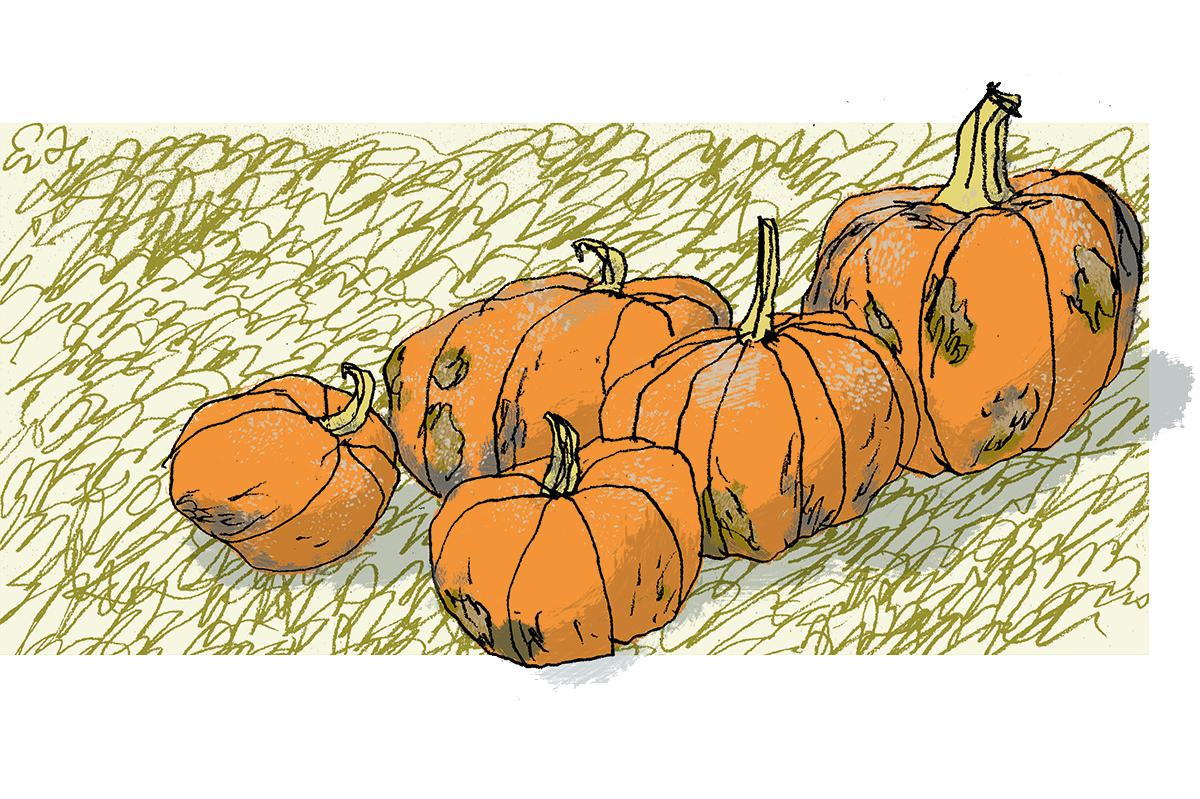I am sure there are beloved British dishes that inspire horror in those from different cultures, that are truly unappealing to the uninitiated. I can quite imagine that the bright green eel-gravy that traditionally accompanies the East End pie and mash could be figuratively and literally hard to swallow. Or that Britain’s predilection for Yorkshire puddings — glorified pancakes — on very savory roast dinners and a desire for strong cheese served with fruitcake make the British seem as mad as a box of frogs.
Vitello tonnato might be called the original surf and turf. But it can be a hard sell
Which is why, despite the horrified faces of anyone I have described this recipe to over the past couple of weeks, I’m prepared to try to convince you that you — yes, you — will in fact love vitello tonnato, if you only give it a chance.
Vitello tonnato is a classic Italian dish, from the northern Piedmontese region. Thin slices of cold, boiled veal are draped in a mayonnaise-like sauce made from tuna, capers and anchovy. In combining meat and fish, vitello tonnato might be called the original surf and turf. But it can be a hard sell: for some reason, those without tonnato experience tend to recoil at the combination, and particularly at the idea of a tuna-based sauce.
It is not helped by its visuals. Vitello tonnato is a symphony of, let’s be honest, gray. There’s no getting away from the fact that if you boil meat, rather than roasting or pan-frying it, it inevitably tends towards the greige. Tuna sauce boasts a similar shade of dun. And bringing a flash of color is the mossy gray-green of the capers. There is some kind of beauty to be found in that gray, but to find it you have to either have been brought up on it, or look really hard.
But gray doesn’t mean bland; in fact quite the opposite. The simmered meat has a delicate flavor and incredibly tender texture, while the tonnato sauce is the perfect complement: salty, rich and fantastically savory, a deep bass drum thump of flavor. The combination is a similar harmony to that you find in a caesar salad, with the anchovy-heavy, unsubtle dressing marrying well with the simpler, quieter chicken. It’s one of those dishes that has the capacity to not only convert its deniers, but turn them into evangelists. Once you’ve accepted vitello tonnato into your life, you’re always looking for it on menus, or trying to thrust it on to the plates of reluctant pals.
Clearly, the recipe is traditionally made with veal — the “vitello” in the title. If you can get hold of rose veal loin, then you can make the classic version, but I tend to find it much harder to source than, say, veal mince or veal escalopes. So, pork is an obvious (and not untraditional) substitute, which will look and taste similar to the original — although technically making the dish porco tonnato, you will not be deviating too far from the classic.
There are variations, of course. The food writer Ed Smith has a meat-free (and linguistically satisfying) play on the dish, tomato tonnato, where sliced tomatoes replace the veal or pork, which has the twin advantages of being both brightly colored and providing a flash of sweet freshness.
For all its old-school Italian chic, vitello tonnato is actually very straightforward to prepare, and results in an achingly cool starter to share at a dinner party. After a quick sear, you can leave the loin to do its thing in a lidded pan, with a bunch of aromatics, while you pile all the sauce ingredients into a food processor and whizz it to satin-smoothness. Wrapping the cooked meat in Saran Wrap and leaving it to cool, as I suggest in the recipe, is a little bit fiddly and not absolutely essential, but it will result in the meat not falling apart despite its lengthy time on the stove, and have the added bonus of giving you neat, evenly sized discs when you slice it.
Serves 4 as a starter
Takes 15 mins
Cooks 1.5 hours, plus chilling
For the meat
- 1.3 lb veal or pork loin
- 2 tbsp olive oil
- 1 carrot
- 1 onion
- 2 ribs celery
- 5 peppercorns
- 2 bay leaves
- 70 oz water
For the sauce
- 4 oz tinned tuna, drained
- 2 oz of capers, drained (plus extra to garnish)
- 4 anchovy fillets
- 2 egg yolks
- 2 tsp white wine vinegar
- 1 lemon
- ⅖ cup olive oil
- ¼ cup neutral oil
- First, sear the meat. Heat the oil in a high-sided, heavy-based pan until hot. Add the meat and cook on each side until golden brown, turning regularly.
- Lower the heat. Add the carrot, celery, onion, peppercorns, bay leaves and water to the pan and bring up to a gentle simmer. Cover and cook for 1.5 hours.
- Remove the meat from the pan and, once cool enough to handle, wrap tightly in Saran Wrap, to create an even, round shape. Refrigerate until cold.
- For the tonnato sauce, put the egg yolks, anchovies, capers and tuna in a food processor, and blend until smooth. Very slowly, add the oils into the tuna mix, with the food processor still running, until it forms a thick mayonnaise. If it is too thick, you can loosen it with a little water. Check for seasoning, and add salt and pepper to taste.
- Remove the Saran Wrap from the cold meat, and slice thinly. Arrange in overlapping slices on a platter, then dress generously with the tonnato sauce. Garnish with extra capers or caper berries, if you wish.
This article was originally published in The Spectator’s UK magazine. Subscribe to the World edition here.



